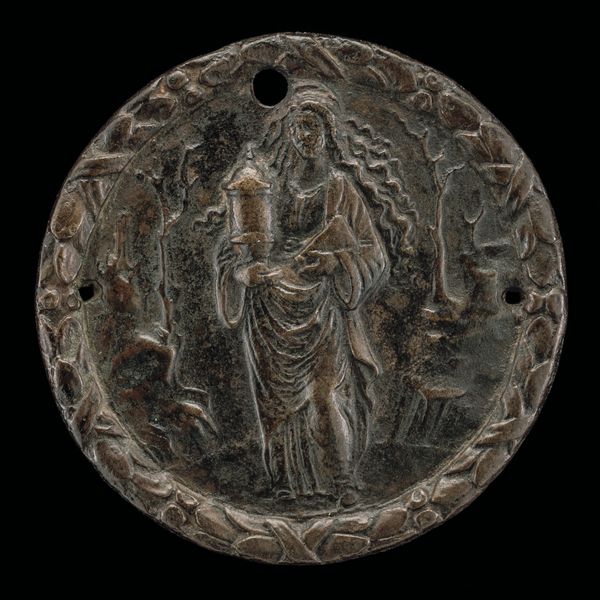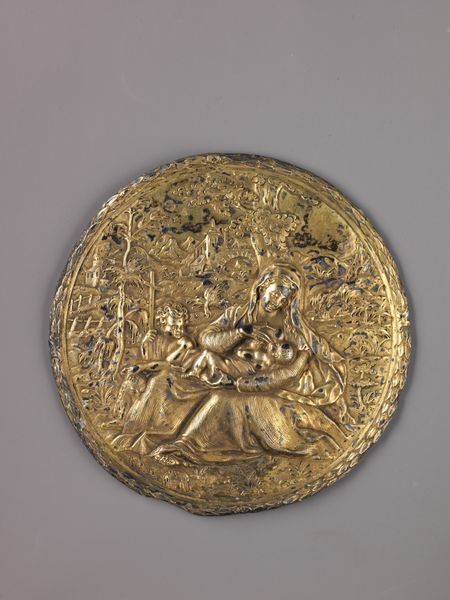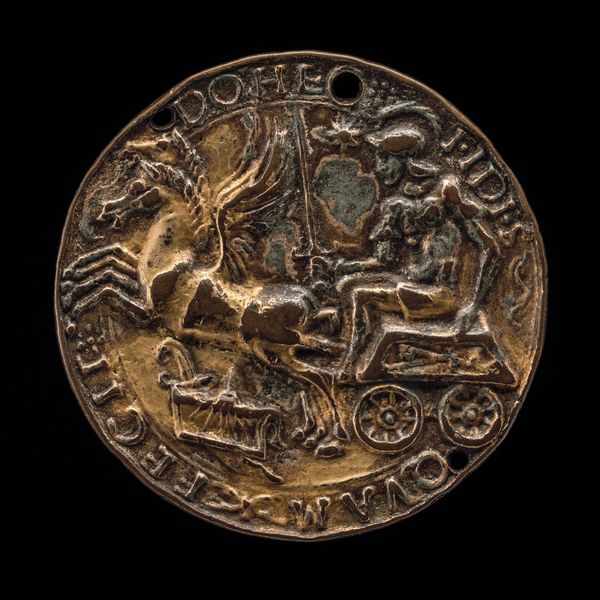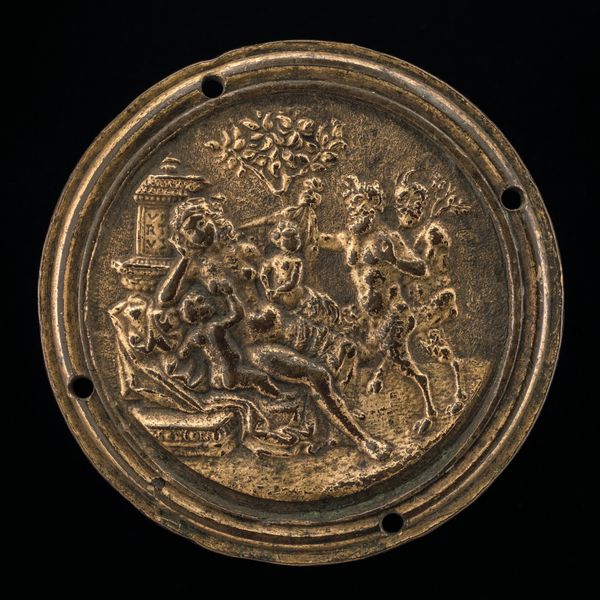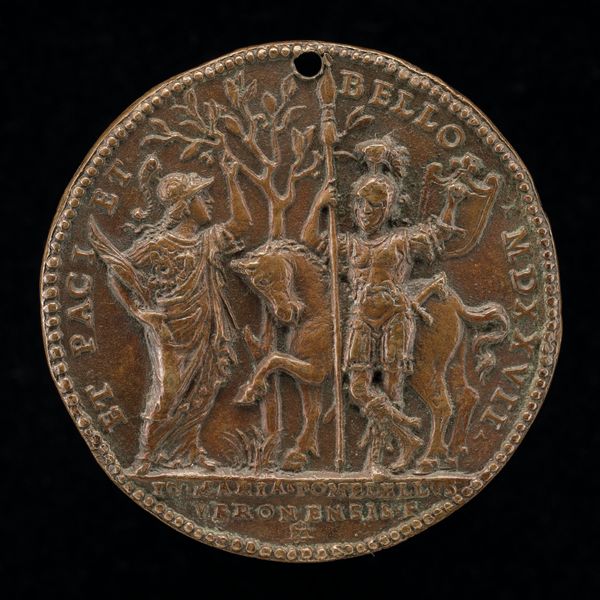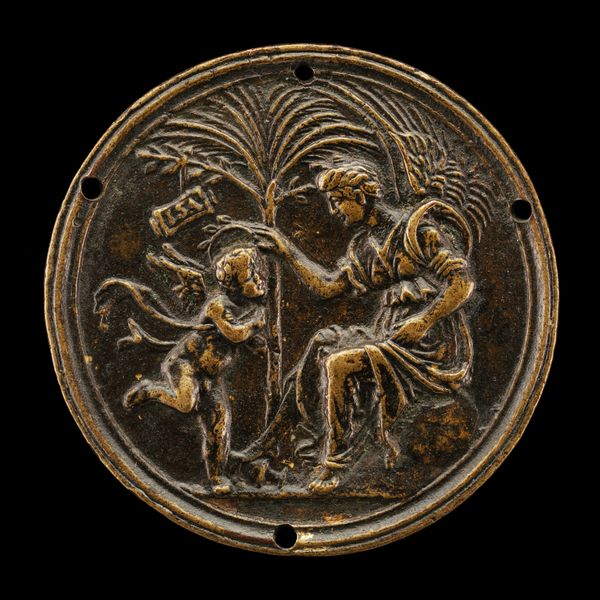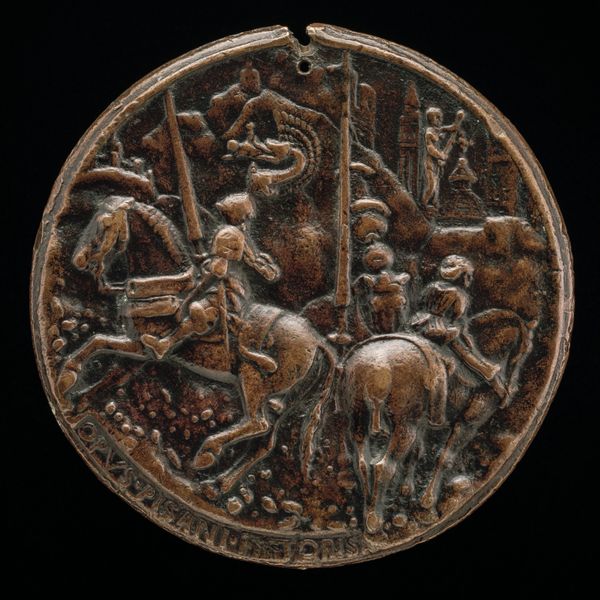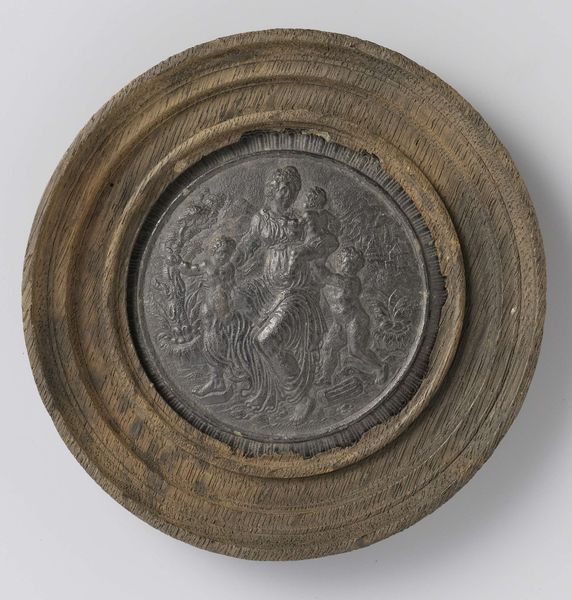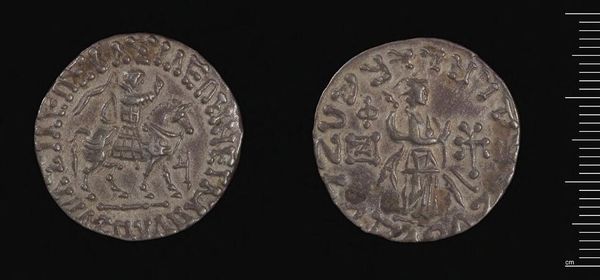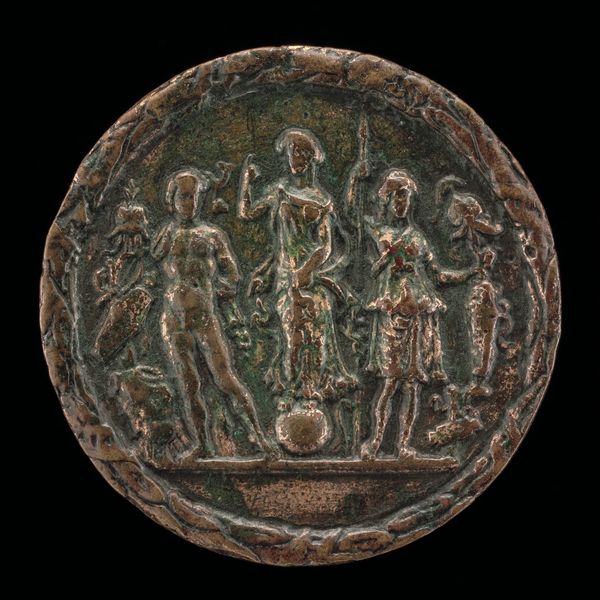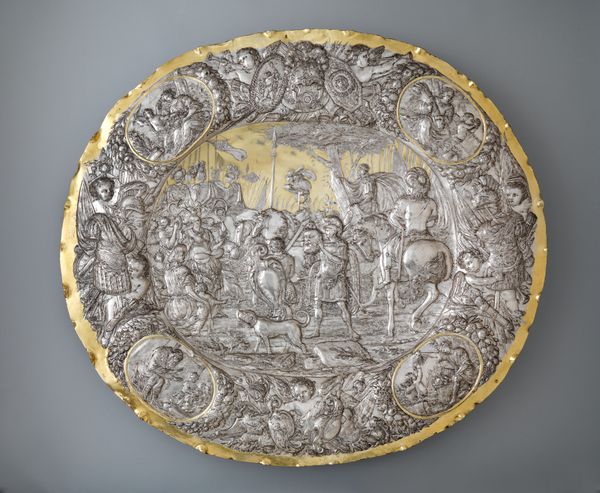
relief, bronze, sculpture
#
allegory
#
relief
#
bronze
#
figuration
#
11_renaissance
#
sculpture
#
italian-renaissance
Dimensions: overall (diameter): 42.1 cm (16 9/16 in.) gross weight: 18.98 gr (0.042 lb.)
Copyright: National Gallery of Art: CC0 1.0
Curator: This bronze relief, attributed to Caradosso Foppa, is entitled "Justice, Science, and Might." Editor: My first impression is that this piece is imbued with a cool, perhaps even aloof sense of authority. The figures are stately and self-assured, but what context might they be suggesting? Curator: Visually, the figures form a tight pyramidal composition contained within the circular frame. The central figure, presumably Justice, occupies the highest point and draws our eye through the geometric construction. I'm particularly drawn to the textural interplay between the smooth figures and the detailed wreath. Editor: But, Justice is often portrayed blindfolded. Note that she wields a staff rather than the traditional scales. Also, Science—reading her book—and Might—holding spears—flank her not as simple allegories, but rather to imply their inextricable bond with governance and power. This resonates with larger philosophical concerns of the era that sought to understand, control, and, at times, dominate the natural world. Curator: I understand. Although these allegories operate with a classical vocabulary, I still admire Foppa's modeling technique. Notice how the robes fall with incredible accuracy. Editor: True, that Renaissance humanism prized observable nature as its primary influence. However, it's impossible to look at an object like this and not think about current conversations regarding authority, power, and even whose knowledge truly counts. To have Science or Might associated to blind "Justice" complicates its message. What message are these three feminine forms presenting to viewers, and what were those power relations historically? Curator: That's a great point to think about, particularly when one considers the Italian Renaissance’s fraught and shifting terrain of alliances and political power. We can appreciate how it reflects society and ideology as conveyed through artistic execution. Editor: It certainly gives me plenty to think about as it prompts questions on themes present today as much as in past times.
Comments
No comments
Be the first to comment and join the conversation on the ultimate creative platform.
